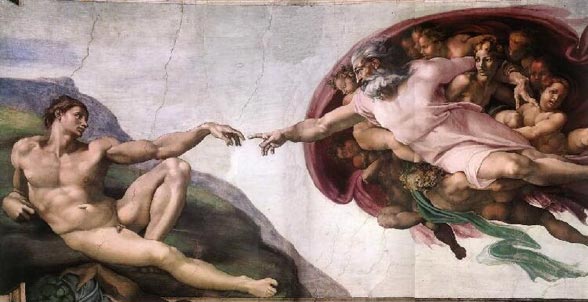Making Sparks

Michelangelo’s Creation of Adam, painted on the Sistine Chapel ceiling between 1508 and 1512, depicts creativity as a gap between two distinct, independently coherent human bodies. A complex and controversial visualisation of the account of Creation given in the Biblical Book of Genesis, it is one of the most familiar and by now most conventional images we have of creativity: the new appears between forces of tension and release, of energy building up in separate structures (these are strong, independent bodies) and discharging across the gap between them. In fact one such spark could account for the painting’s own genesis. It jumped improbably between a powerful ancient text, profoundly implicated in conditions of social and economic upheaval in Renaissance Italy, and the mind of one free reader of that text and resident of that time and place. it had enough energy to illuminate a new way to see–and to think.
It may seem awkward, or at least unfamiliar to model creativity arising in confrontation between two different kinds of energy. Awkwardness notwithstanding, this essay argues, the idea of “creativity” needs to be rescued from its current associations with entertainment or therapy or even art, because although creativity can be, it is not necessarily any of these things. It isn’t “extra,” but a will to overcome the resistance between them–to make them “work” — if not exactly to work together, to determine what new conditions–what new universe would be capable of accommodating both in terms of “sparks”– jumps between significantly different, independently coherent “bodies” of memory, thought, skill, or perception. Writing continues to shape the way most of us perceive the world around us, conceive of time, speak, relate to others, and remember, it perhaps inevitably looms large even here, in such a modest sketch of a way to rethink creativity. The essay, finally, draws heavily on the thought of Vilem Flusser, and tries to be consistent with the way he describes and values creativity. In a sense, it tries to extend his thinking into areas he himself did not explicitly discuss.


